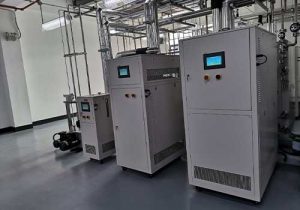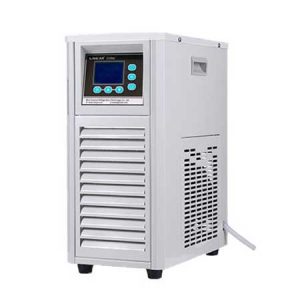flow heater
Types of Flow Heaters and Their Working Principles
Electric Flow Heaters
Typical Applications: Electric flow heaters are commonly used in domestic water heating systems, providing instant hot water for sinks, showers, and washing machines. In industrial settings, they are used for heating process fluids in chemical plants, pharmaceutical manufacturing, and in the heating of printing inks in the printing industry. They are also popular in small – scale applications like laboratory equipment, where precise and rapid heating of small volumes of fluids is required.

Gas – Fired Flow Heaters
Working Principle: Gas – fired flow heaters burn natural gas, propane, or other combustible gases to generate heat. The gas is mixed with air in a burner, and the resulting mixture is ignited. The combustion process releases a large amount of heat, which is then transferred to the fluid flowing through the heater. Heat exchangers are an essential component of gas – fired flow heaters. These heat exchangers are designed to maximize the transfer of heat from the combustion gases to the fluid. They are typically made of materials with high thermal conductivity, such as copper or stainless steel. The fluid passes through the tubes or channels of the heat exchanger while the hot combustion gases flow around it, heating the fluid. Gas – fired flow heaters often have safety features like flame sensors and gas shut – off valves to ensure safe operation. If the flame goes out unexpectedly, the gas supply is immediately cut off to prevent gas leakage.
Typical Applications: In large – scale commercial and industrial applications, gas – fired flow heaters are used for heating water in hotels, hospitals, and industrial laundries. They are also employed in the food processing industry for heating water used in cooking, cleaning, and sterilization processes. In some regions, gas – fired flow heaters are used for space heating in large buildings, where they heat water that is then circulated through radiators or under – floor heating systems.
Steam – Based Flow Heaters
Working Principle: Steam – based flow heaters utilize steam, which is generated in a boiler, as the heat source. The steam, which is at a high temperature and pressure, comes into contact with the fluid to be heated. Heat is transferred from the steam to the fluid through a heat exchanger. As the steam gives up its heat, it condenses back into water. The condensed water, known as condensate, is then returned to the boiler to be reheated and turned back into steam, creating a closed – loop system. The heat transfer process in steam – based flow heaters is very efficient due to the high latent heat of vaporization of steam. This means that a large amount of heat can be transferred during the condensation process without a significant change in the temperature of the steam.
Typical Applications: Steam – based flow heaters are widely used in the food and beverage industry for processes such as pasteurization, cooking, and sterilization. They are also used in pharmaceutical manufacturing for heating and sterilizing equipment and fluids. In the textile industry, steam – based flow heaters are used for processes like dyeing and finishing, where precise temperature control of water or other fluids is required.
Key Factors to Consider When Choosing a Flow Heater
Heating Capacity
Over – Sizing vs. Under – Sizing: Over – sizing a flow heater can lead to higher initial costs, increased energy consumption, and potentially less accurate temperature control. Under – sizing, on the other hand, will result in the heater being unable to heat the fluid to the desired temperature, especially during peak demand periods. It’s important to accurately assess your heating requirements and choose a flow heater with an appropriate capacity, or consult with a heating professional for advice.
Fluid Compatibility
Material Compatibility: Different fluids can have varying chemical properties, and it’s crucial to ensure that the materials used in the flow heater are compatible with the fluid being heated. For example, if you are heating a corrosive chemical solution, using a flow heater with a stainless – steel or plastic – lined interior can prevent corrosion and extend the lifespan of the heater. Water with high mineral content can cause scaling in the heater, so flow heaters designed for such water may have features like descaling mechanisms or materials that are less prone to scaling.

Viscosity Considerations: The viscosity of the fluid also plays a role. Highly viscous fluids may require more power to be pumped through the heater and may flow more slowly, affecting the heat transfer process. Flow heaters designed for high – viscosity fluids often have larger channels or higher – powered pumps to ensure proper flow and heating.
Energy Efficiency
Efficiency Ratings: Many regions have energy – efficiency rating systems for heating equipment. For electric flow heaters, looking for models with high – efficiency ratings can save on electricity bills over time. Gas – fired flow heaters with high – efficiency burners and well – designed heat exchangers can also reduce gas consumption. Energy – efficient flow heaters may use advanced technologies such as variable – speed pumps, which adjust the flow rate of the fluid based on the heating demand, reducing energy waste.
Insulation: Good thermal insulation of the flow heater and its associated pipes can significantly improve energy efficiency. Insulation helps to prevent heat loss to the surrounding environment, ensuring that more of the generated heat is transferred to the fluid. Flow heaters with well – insulated casings and pipes will operate more efficiently and consume less energy.
Safety Features
Overheat Protection: Flow heaters should be equipped with overheat protection mechanisms. These can include thermostats that automatically shut off the heater if the temperature of the fluid or the heater itself exceeds a pre – set limit. Overheat protection helps to prevent damage to the heater, potential fires, and harm to the equipment or processes that rely on the heated fluid.
Pressure Relief Valves: In steam – based and some high – pressure flow heaters, pressure relief valves are essential. These valves open when the internal pressure of the heater exceeds a safe level, releasing excess pressure to prevent the heater from bursting.
Flame Safety Devices (for Gas – Fired Heaters): Gas – fired flow heaters should have reliable flame safety devices, such as flame sensors and gas shut – off valves. These devices ensure that the gas supply is cut off immediately if the flame goes out, preventing gas leakage and potential explosions.
Installation, Operation, and Maintenance of Flow Heaters
Installation
Location: Choose a suitable location for the flow heater. For electric flow heaters, ensure there is a proper electrical supply with the correct voltage and amperage, and follow local electrical codes for installation. Gas – fired flow heaters need to be installed in well – ventilated areas to ensure the safe discharge of combustion gases. They should also be connected to a reliable gas supply, and all gas connections should be leak – tested. Steam – based flow heaters require a connection to a steam source (a boiler) and proper drainage for the condensate. The location should also allow for easy access for maintenance and servicing.
Piping and Connections: Connect the flow heater to the fluid supply and return lines using appropriate pipes and fittings. For fluids with high temperatures or pressures, use pipes and fittings that are rated for those conditions. Ensure all connections are tight to prevent leaks. In the case of gas – fired heaters, use gas – rated pipes and fittings, and follow the manufacturer’s instructions for gas line installation.

Operation
Startup and Shutdown Procedures: Follow the manufacturer’s recommended startup and shutdown procedures. For electric flow heaters, this may involve turning on the power switch and setting the desired temperature. Gas – fired flow heaters require proper ignition procedures, which may include purging the gas lines of air before ignition. During operation, monitor the flow rate, temperature, and pressure of the fluid regularly. If any abnormal readings are detected, such as a sudden drop in flow rate or an unexpected increase in temperature, shut down the heater immediately and investigate the cause.
Adjusting Settings: Adjust the temperature and other settings of the flow heater as per the requirements of your application. Avoid making frequent or drastic changes to the settings, as this can cause fluctuations in the temperature of the fluid and may lead to inefficient operation of the heater.
Maintenance
Regular Cleaning: Clean the interior and exterior of the flow heater regularly. For electric flow heaters, this may involve removing any scale or deposits that have formed on the heating elements. Gas – fired flow heaters need their burners and heat exchangers cleaned to ensure efficient combustion and heat transfer. Steam – based flow heaters should have their heat exchangers and condensate lines cleaned to prevent blockages.
Component Inspection and Replacement: Periodically inspect components such as pumps, valves, thermostats, and sensors. Replace any worn – out or damaged components in a timely manner. For example, if a pump is making unusual noises or not providing the required flow rate, it may need to be repaired or replaced.
Calibration: For flow heaters with temperature – control systems, regular calibration of the thermostats and temperature sensors is important to ensure accurate temperature control. This can be done using calibrated temperature measurement devices and following the manufacturer’s calibration procedures.
Conclusion
Flow heaters are diverse and essential heating devices with a wide range of applications. By understanding the different types, considering key factors when choosing, and following proper installation, operation, and maintenance procedures, users can select and utilize flow heaters effectively. Whether for domestic, commercial, or industrial use, making informed decisions about flow heaters is crucial for achieving efficient and reliable fluid heating.
Related recommendations
liquid cooled chiller
533Liquid-Cooled Chillers: High-Performance Cooling for Industrial Applications Introduction Liquid-cooled chillers are increasingly becoming the cooling solution of choice in various industrie...
View detailsReasons for Frosting of Low Temperature Chiller
1395Reasons for Frosting of Low Temperature Chiller When using a low-temperature chiller, there will be frosting. Although the frosting problem will not immediately cause the equipment to be unus...
View detailsHow to maintain an industrial water chiller machine?
1376How to maintain an industrial water chiller machine? 1、 Regularly check whether the voltage and electric flow of the chiller are stable, and whether the sound of the compressor is norm...
View detailswater bath circulator heater
564Introduction to Water Bath Circulator HeatersWater bath circulator heaters are essential tools in scientific laboratories and industrial settings where precise temperature control is required. The...
View details
 LNEYA Chiller
LNEYA Chiller







HelloPlease log in